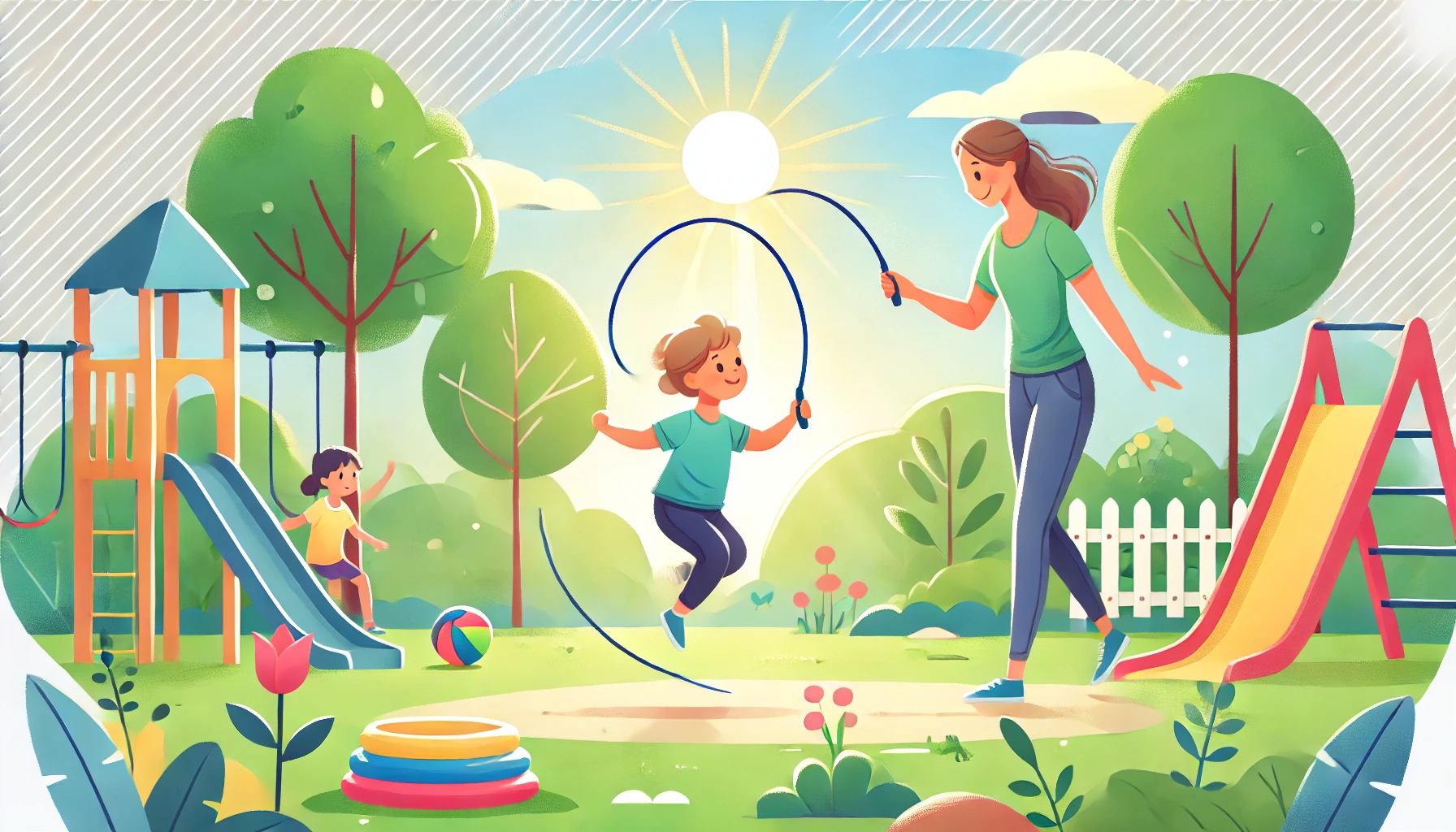Physical activity is a vital part of a young child’s healthy development. It helps strengthen the body, supports mental health, builds confidence, and improves focus and mood. Children are naturally energetic and curious, making early childhood the perfect time to introduce exercise in a way that feels fun, rewarding, and part of everyday life.
Why Exercise Is Important for Young Children
- Supports physical growth and muscle development
- Enhances coordination, balance, and motor skills
- Boosts mood and reduces stress
- Promotes better sleep and energy regulation
- Encourages teamwork and social skills
1. Explain Movement in Fun, Positive Terms
Help kids understand that exercise is about moving and feeling good.
Activity Idea:
- Say: “Exercise is how we move our bodies to stay strong and healthy.”
- Ask: “What’s your favorite way to move your body?”
- Use phrases like: “Running gives us energy” or “Jumping helps our hearts!”
What Kids Learn:
- That exercise is enjoyable, not a chore.
- The connection between movement and how they feel.
- To see movement as something natural and fun.
2. Make Movement a Daily Routine
Kids thrive on routines—include physical activity in theirs.
Activity Idea:
- Schedule outdoor play or dancing after breakfast or before dinner.
- Alternate types of movement: yoga, dancing, obstacle courses, animal walks.
- Encourage short movement breaks during screen time or learning time.
What Kids Learn:
- That exercise is part of daily life.
- That short bursts of movement matter.
- The value of consistency.
3. Use Active Games and Challenges
Games make exercise more engaging.
Activity Idea:
- Play Freeze Dance, Simon Says, or follow-the-leader with movement themes.
- Create a “movement challenge”: “Can you hop like a frog for 10 seconds?”
- Set up indoor or outdoor obstacle courses with safe household items.
What Kids Learn:
- That movement can be playful and creative.
- How to use their imagination during physical play.
- How to build endurance and coordination.
4. Explore a Variety of Activities
Expose kids to different ways to move their bodies.
Activity Idea:
- Try dancing, swimming, biking, climbing, yoga, or stretching.
- Let your child choose: “Do you want to ride your scooter or dance inside today?”
- Watch short videos of different cultural dances or sports together.
What Kids Learn:
- That there are many fun ways to be active.
- Which types of movement they enjoy most.
- To stay curious and open to new experiences.
5. Be Active as a Family
Model healthy habits by moving together.
Activity Idea:
- Go for walks, bike rides, or nature hikes.
- Have dance parties at home or do family yoga.
- Join your child’s play: run, crawl, jump, and laugh with them.
What Kids Learn:
- That exercise can be social and joyful.
- That parents value staying active too.
- How to build healthy habits together.
6. Encourage Outdoor Exploration
Nature invites movement and discovery.
Activity Idea:
- Go to a park, beach, or trail where there’s space to run, climb, and explore.
- Play nature-themed games: find a rock, hop like a bunny, race to a tree.
- Let your child lead the adventure and follow their energy.
What Kids Learn:
- That the outdoors offers endless opportunities to move.
- How nature and exercise connect.
- Independence and curiosity in active play.
7. Celebrate Effort, Not Just Skill
Make every movement feel like a win.
Activity Idea:
- Say: “You tried so hard to climb the ladder—that’s awesome effort!”
- Create a “Movement Star” chart or let kids earn fun badges for trying new activities.
- Reflect: “How did your body feel after running around outside?”
What Kids Learn:
- That effort is more important than being “good” at something.
- The satisfaction of trying and growing.
- That exercise is about feeling strong and happy.
8. Teach the Connection Between Movement and Health
Help kids understand what exercise does for their bodies.
Activity Idea:
- Use child-friendly language: “Exercise helps our heart beat strong and keeps our bones tough!”
- Play doctor games with dolls or stuffed animals and talk about healthy movement.
- Read books about active characters or superheroes who stay strong by moving.
What Kids Learn:
- Why staying active matters.
- The connection between fun and wellness.
- That they can take care of their own body.
Final Thoughts
Teaching young children about the importance of exercise sets them on a path of physical, mental, and emotional wellness. By making movement part of everyday life—and keeping it light, fun, and flexible—parents can help kids discover the joy of staying active. Movement isn’t just something to do—it’s a celebration of what their growing bodies can achieve.
